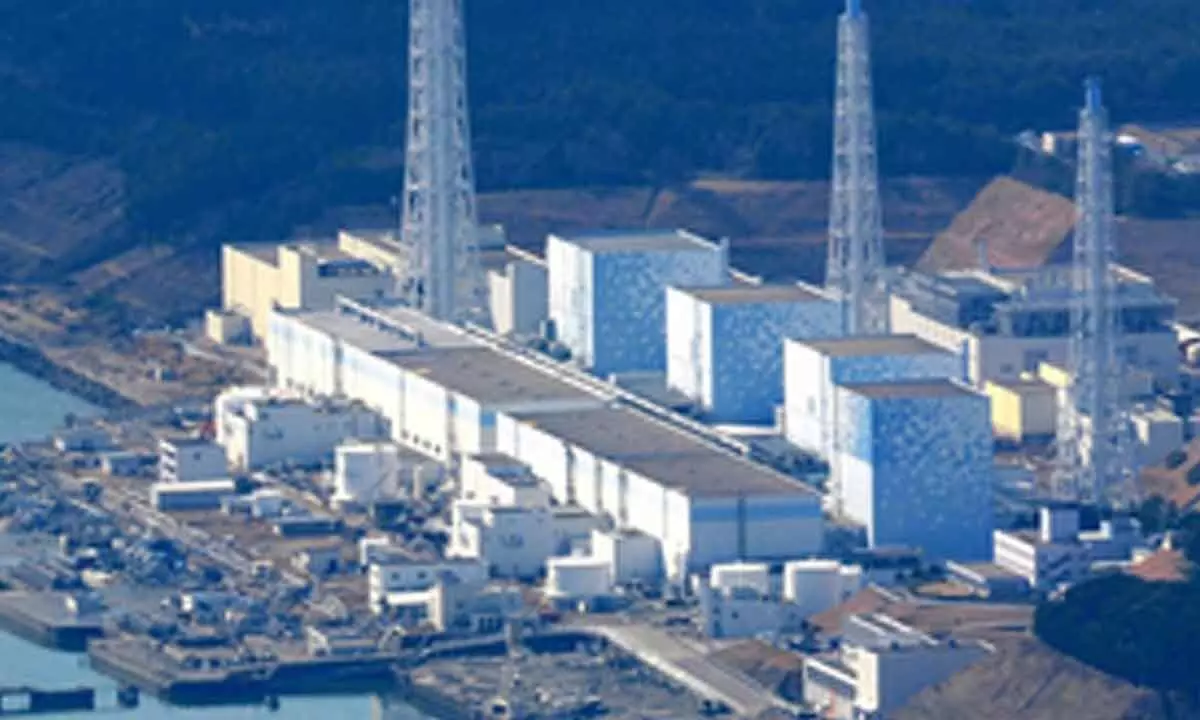Live
- TTD unveils vision for Global Outreach
- Women should not be confined to homes: CM Naidu
- Xmas bells toll in churches as city glows with festive joy
- Governor, CM extend Christmas greetings
- Beacons of hope and love born on December 25
- Vajpayee’s legacy lives on as country marks his birth centenary
- Rythu Bharosa to pick best from PM -KISAN scheme
- Medak wears season’s festive look
- TG sets record in fine rice purchase
- Maintaining India’s growth momentum
Just In
Cooling system halts at wrecked Fukushima plant due to power panel glitch

he cooling system for the spent fuel pool at a reactor of the crippled Fukushima Daiichi nuclear power plant was temporarily halted for about 10 hours on Tuesday, following a power panel malfunction, local media reported.
Tokyo : The cooling system for the spent fuel pool at a reactor of the crippled Fukushima Daiichi nuclear power plant was temporarily halted for about 10 hours on Tuesday, following a power panel malfunction, local media reported.
The issue began at approximately 8:35 a.m. local time, when a high-voltage circuit breaker tripped, causing the pump responsible for circulating cooling water to cease operation at No. 6 reactor of the plant, national news agency Kyodo reported citing Tokyo Electric Power Company Holdings (TEPCO), the plant's operator.
According to TEPCO, the pump was restored at around 6:20 p.m., Xinhua news agency reported.
Although an emergency diesel generator started immediately after the circuit breaker tripped, it failed to activate the cooling pump. Despite the interruption, TEPCO confirmed that there were no significant changes in the water level or temperature of the pool during the downtime.
Coinciding with the glitch, smoke was observed emanating from the basement of the reactor's turbine building, triggering a fire alarm, with no injuries reported.
TEPCO is currently investigating the cause of both the power panel glitch and the smoke accident.
At the time of the accident, the spent fuel pool contained 1,280 units of spent nuclear fuel and 198 units of unspent fuel.
Additionally, the power panel issue led to a temporary halt in the ventilation and radiation monitoring systems of a facility used for incinerating waste materials, including cleared vegetation, Kyodo added.
TEPCO is currently in the process of decommissioning the power plant, which suffered core meltdowns that released radiation after being hit by a 9.0-magnitude earthquake and an ensuing tsunami on March 11, 2011, resulting in a level-7 nuclear accident, the highest on the International Nuclear and Radiological Event Scale.
Amid raging credibility and safety concerns among the Japanese public following a series of accidents at the crippled plant, TEPCO and the Japanese government have been frequently challenged for ocean discharge of nuclear-contaminated wastewater from the plant.

© 2024 Hyderabad Media House Limited/The Hans India. All rights reserved. Powered by hocalwire.com






